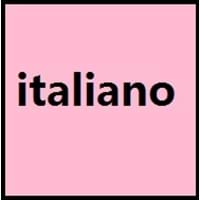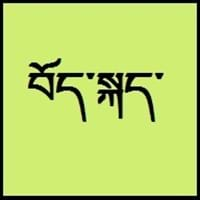Countries
Croatia, European Union, Italy, San Marino, Slovenia, Switzerland, Vatican City
China, Nepal
National Language
Italy, San Marino, Switzerland, Vatican City
Nepal, Tibet
Second Language
Albania, Croatia, Malta, Slovenia
Not spoken in any of the countries
Speaking Continents
Europe
Asia
Minority Language
Crimea, Eritrea, France, Libya, Monaco, Montenegro, Romania, Somalia
China, India, Nepal
Regulated By
Accademia della Crusca (Academy of the bran)
Committee for the Standardisation of the Tibetan Language
Interesting Facts
- One of the most romantic and melodic language in the history of the world is Italian.
- Italian Language is in the top three of the most widely spoken European languages in Europe.
- Tibetan dialects vary alot, so it's difficult for tibetans to understand each other if they are not from same area.
- Tibetan is tonal with six tones in all: short low, long low, high falling, low falling, short high, long high.
Similar To
French and Portuguese Languages
Not Available
Derived From
Latin
Not Available
Alphabets in
Italian-Alphabets.jpg#200
Tibetan-Alphabets.jpg#200
Scripts
Latin
Tibetan alphabet, Tibetan Braille
Writing Direction
Left-To-Right, Horizontal
Left-To-Right, Horizontal
Hello
ciao
བཀྲ་ཤིས་བདེ་ལེགས། (tashi delek)
Thank You
grazie
ཐུགས་རྗེ་ཆེ་། (tujay-chay)
How Are You?
Come stai?
ཁྱེད་རང་སྐུ་གཇུགས་བདེ་པོ་ཡིན་པས།
(kayrang kusu debo yimbay?)
Good Night
buonanotte
གཟིམ་ལཇག་གནང་དགོས་། (sim-jah nahng-go)
Good Evening
buonasera
དགོང་དྲོ་བདེ་ལེགས།
Good Afternoon
buon pomeriggio
ཉིན་གུང་བདེ་ལེགས།
Good Morning
buongiorno
སྔ་དྲོ་བདེ་ལེགས། (nga-to delek)
Please
Per Favore
thu-je zig / ku-chee.
Sorry
scusate
ཀོང་དགས་། (gawn-da)
Bye
arrivederci
ག་ལེར་ཕེབས་། (kha-leh phe)
I Love You
Ti amo
ང་ཁྱེད་རང་ལ་དགའ་པོ་ཡོད་ (nga kayrâng-la gawpo yö)
Excuse Me
Scusami
དགོངས་དག བཟོད་དུ་གསོལ། ཐུགས་རྗེ་གཟིགས།
Dialect 1
Romanesco
Central Tibetan
Where They Speak
Lazio
China, India, Nepal
Dialect 2
Central Italian
Khams Tibetan
Where They Speak
Abruzzo, central Marche, Lazio, south Tuscany, Umbria
Bhutan, China
Dialect 3
Tuscan
Amdo Tibetan
Where They Speak
Corsica, Gallura, Haute-Corse, Sardinia, Tuscany, Umbria
China
How Many People Speak
Not Available
Speaking Population
Not Available
Second Language Speakers
Not Available
Native Name
Italiano
བོད་སྐད་ (pö-gay)
Alternative Names
Italiano
Bhotia, Dbus, Dbusgtsang, Phoke, Tibetan, U, Wei, Weizang, Zang
French Name
italien
tibétain
German Name
Italienisch
Tibetisch
Pronunciation
[itaˈljaːno]
Not Available
Ethnicity
Italians
tibetan people
Language Family
Indo-European Family
Sino-Tibetan Family
Subgroup
Romance
Tibeto-Burman
Branch
Not Available
Not Available
Early Forms
No early forms
Old Tibetan, Classical Tibetan
Standard Forms
Italian
Standard Tibetan
Language Position
Not Available
Signed Forms
italiano segnato "Signed Italian" & italiano segnato esatto "Signed Exact Italian"
Tibetan Sign Language
Scope
Individual
Not Available
ISO 639 6
itas
Not Available
Glottocode
ital1282
tibe1272
Linguasphere
51-AAA-q
No data Available
Language Type
Living
Not Available
Language Linguistic Typology
Subject-Verb-Object
Not Available
Language Morphological Typology
Fusional, Synthetic
Not Available
Italian and Tibetan Greetings
People around the world use different languages to interact with each other. Even if we cannot communicate fluently in any language, it will always be beneficial to know about some of the common greetings or phrases from that language. This is where Italian and Tibetan greetings helps you to understand basic phrases in Italian and Tibetan language. Italian word for "Hello" is ciao or Tibetan word for "Thank You" is ཐུགས་རྗེ་ཆེ་། (tujay-chay). Find more of such common Italian Greetings and Tibetan Greetings. These greetings will help you to be more confident when conversing with natives that speak these languages.
Italian vs Tibetan Difficulty
The Italian vs Tibetan difficulty level basically depends on the number of Italian Alphabets and Tibetan Alphabets. Also the number of vowels and consonants in the language plays an important role in deciding the difficulty level of that language. The important points to be considered when we compare Italian and Tibetan are the origin, speaking countries, language family, different greetings, speaking population of these languages. Want to know in Italian and Tibetan, which language is harder to learn? Time required to learn Italian is 24 weeks while to learn Tibetan time required is 24 weeks.





